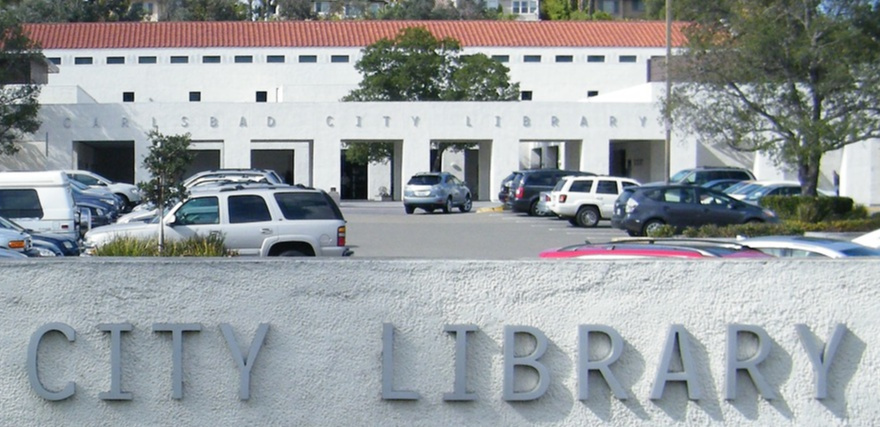“[W]hat most librarians went to school to study and earn a degree in has very little practical application on the floor. A modern-day librarian is now a de facto social worker and first responder,” says Emilio Estevez, director and producer of “The Public,” a 2018 film based at the Cincinnati Public Library.
“The Public” is a fictional account. It represents the shift in focus at a metropolitan library as needs of its patrons evolve.
The library still fields reference questions for which all libraries are known — anything from the commonplace (“what’s the chemical makeup of water again?”) to the more obscure (“what is eigengrau?”).
In addition to questions that could be called “book-learning” queries, libraries are increasingly being called upon to answer “life-management” questions and help patrons find solutions to more basic needs.
Although Emilio Estevez refers to a “de facto” social worker when discussing “The Public,” real libraries around the US are placing full-time licensed social workers on staff. They are contributing to “the community living room.”
The Social Worker’s Growing Role at the Library
Leah Esguerra, LMFT, coined the term “community living room” for the library that has a social worker as part of its mix.
Although library social workers have now created protocols and resources to guide themselves and their peers, nothing formal existed when Esguerra became the San Francisco Public Library’s social worker — the first such known position in the nation — in 2009.
Esguerra began finding her way by meeting with every department of the library over a six-month period. With the directive to serve “patrons, the community and library staff,” Esguerra built relationships, worked to understand the culture of the library and sought ideas for integrating social work into an environment that was unconventional for a social worker. She now supervises a team of eight people.
Living Rooms are for Living
Calling a library a “community living room” is apt in the current environment, since the concept implies the type of constant change and adaptability involved in the act of living.
There is overlap among the types of assistance social workers provide in the library setting, with variation that depends on each community’s unique situation.
Patrick Lloyd, LMSW, the Community Resources Coordinator at the Georgetown, Texas, Public Library, concurs with Denver Public Library Community Resource manager Elissa Hardy, LCSW, in saying he sees all of his efforts as contributing to the library’s role as a protective factor — something associated with a lower likelihood of problem outcomes or that reduces the negative impact of a risk factor on problem outcomes — for patrons.
Lloyd, working in a relatively small (just over 65,000) community, says the top three issues he handles are financial need, affordable housing and emergency shelter. He also assists patrons with educational resources (such as how to obtain a GED), affordable legal help, transportation needs and mental health issues.
Lee Patterson, LMSW, Social Work Manager at the Richland Library in Columbia, S.C., lists transportation, access to affordable housing and communication (access to telephones, for example) as the three most pressing needs among her library’s clientele.
How Social Workers Integrate into the Life of the Library
Since libraries only began including social workers on staff 10 years ago, the interface between social workers and library staff is a young idea. Lloyd says he has seen a shift in the almost three years since he began working at the library. Staff members who previously would point out a patron in hopes that Lloyd would help them now feel informed and empowered enough themselves to assist the patron, then tell Lloyd what they did.
There are practical implications of applying the “community living room” philosophy, such as being prepared for the effect on the library of the growing opioid epidemic. Many libraries train their staff members to administer Narcan to counteract opioid overdoses. The Denver Public Library, for example, reports having reversed 24 potential opioid overdoses since February 2017 through the use of Narcan.
Funding Sources for the Social Work Function at the Library
Funding models vary regarding how libraries pay for social workers. For example:
- Some social workers are funded through the library’s main budget
- Some social workers (such as Lloyd in Texas) are library workers, but the funding source is a time-limited grant
- Libraries such as the Evanston Public Library in Chicago host outsourced professionals (the Evanston arrangement is through Amita Health)
If You’re a Social Worker Interested in a Place for Yourself at the Library
There are many ways to learn more about being a library social worker and to network with the people who have been involved in the specialty already. Here are a few:
- Check out the Whole Person Librarianship website
- If you are a member of the Public Library Association, join their Social Worker Task Force
- Bookmark the Public Libraries Online Social Work Column
- If you are a social work student, join the Social Work Students & Public Libraries site
Libraries are different places than they were 10 years ago when San Francisco officially placed the first social worker in a library. The world is different, too, with economic forces and a shrinking set of mental health resources causing disparate treatment. As Scott Jarzombek, Executive Director of the Albany, N.Y., Public Library, says, “That’s the beauty of the library; everybody gets the same treatment.”
Is this community living room the place for you as a social worker?
If you enjoyed this article, sign up for the free Social Work SmartBrief, one of more than 200 industry-focused newsletters.
Paula Kiger edits SmartBrief’s nonprofit sector newsletters and co-manages @SBLeaders on Twitter. She worked extensively in Florida’s quasi-governmental children’s health insurance program that became a national model, has served as a United Nations Foundation Shot at Life Champion leader, has proofread professionally and has extensive social media experience. You can find her at her blog Big Green Pen, on Instagram, at LinkedIn and on Twitter.
